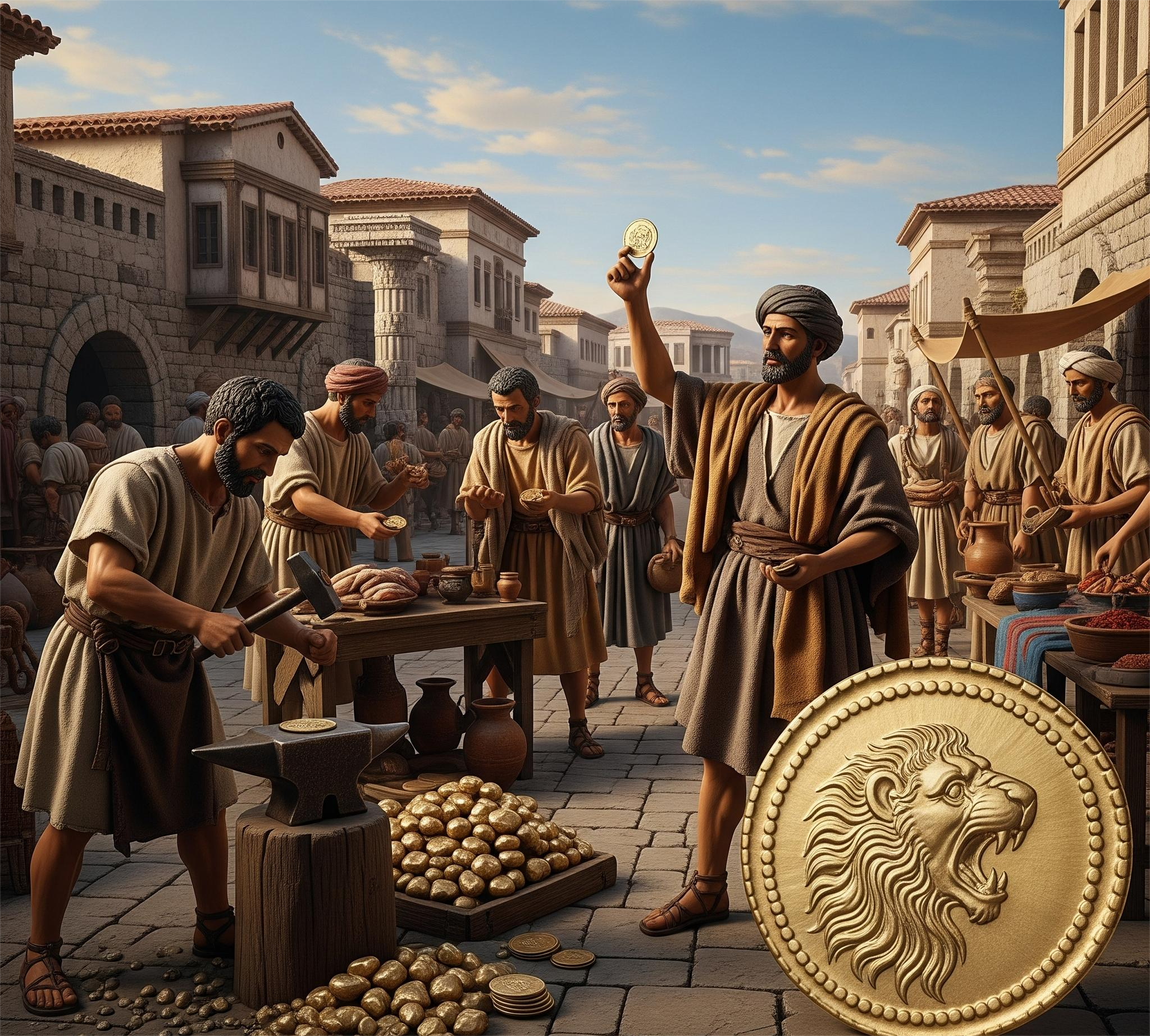In the grand mosaic of human history, few innovations have had as profound an impact as the invention of money. And at the heart of this economic revolution lies the ancient kingdom of Lydia, nestled in what is now western Turkey. Around the 7th century BCE, the Lydians introduced the world’s first metal coins, forever transforming commerce, governance, and global economies.
Let’s dive into the origins of coinage, explore why the Lydians created it, and examine how it reshaped ancient civilization.
Who Were the Lydians?
The Lydians were an ancient Anatolian people whose kingdom thrived between the 12th and 6th centuries BCE. Their capital, Sardis, became a wealthy and influential city, located at the crossroads of key trade routes between the Aegean and the interior of Asia Minor.
Their most famous king, Croesus (r. ~560–546 BCE), became a legendary figure synonymous with immense wealth—so much so that the phrase “rich as Croesus” is still used today.
But before Croesus, it was his predecessor King Alyattes who first oversaw the minting of coins that would shape the future.
The First Coins: Electrum and the Lion Stamp
The earliest coins, minted around 610–600 BCE, were made from electrum, a naturally occurring alloy of gold and silver found in the rivers of Lydia, especially the Pactolus River.
These coins were irregular in shape, stamped on one side with a royal emblem—often a lion, symbol of the Lydian kings.
They weighed consistently and were of standard purity, which gave them predictable and trusted value in transactions.
This innovation standardized trade, replacing the cumbersome systems of bartering or weighing raw metals. For the first time, wealth could be counted, stored, and moved easily, even across borders.
Why Coinage Was Revolutionary
The Lydians’ invention of coinage wasn't just a novelty—it solved real economic problems and offered lasting benefits:
Trust and Uniformity: Coinage allowed buyers and sellers to transact confidently without testing metal quality each time.
Government Control: Kings could regulate and tax economies more efficiently by issuing coins bearing royal symbols.
Trade Expansion: Coins encouraged regional and long-distance trade, especially along Anatolia’s busy land routes and seaports.
Military Pay: Soldiers could be paid in coin, facilitating the creation of standing armies and imperial expansion.
From Lydia to the World
The coinage system quickly spread:
Greek city-states, such as Aegina and Athens, adopted and refined the practice, developing beautifully designed silver coins like the Athenian owl.
Persia, after conquering Lydia under Cyrus the Great in 546 BCE, continued minting coins (notably the daric, a gold coin used across the Persian Empire).
The Romans and Hellenistic kingdoms later developed sophisticated monetary economies based on these early Lydian principles.
By the Classical period, coins had become a cornerstone of statecraft, war, and everyday life, embedded in everything from taxes to temples.
Archaeological Evidence
Numerous Lydian coins have been found in hoards and excavation sites across Asia Minor and the eastern Mediterranean. The earliest examples, sometimes called “staters,” often have punch marks on the reverse side and simple animal images on the front.
The city of Sardis, now an archaeological site, has yielded significant evidence of early coin minting, including furnaces, molds, and traces of electrum alloying processes.
Legacy of the Lydians
The Lydians may not have invented the concept of money—which existed in other forms like cattle, grain, or weighed silver—but they revolutionized it by creating a portable, durable, and trusted medium of exchange.
Their innovation:
Democratized commerce, enabling merchants and citizens to participate in markets without elite connections or barter.
Inspired artistic design, with coins becoming objects of beauty as well as function.
Laid the groundwork for banking, savings, and capitalism, centuries before the rise of modern finance.






